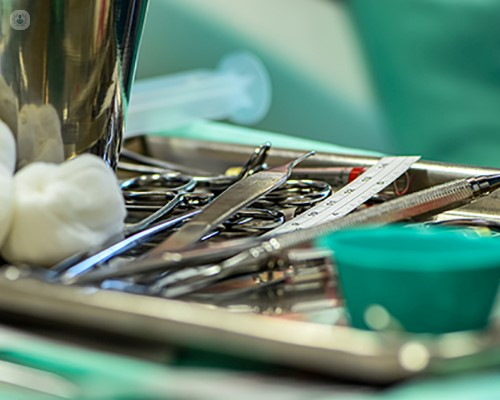The essentials of image guided biopsies
Escrito por:When faced with health concerns that require further investigation, a biopsy can provide valuable insights. This procedure involves obtaining a small tissue sample or cells from a specific area of the body for testing and analysis in a laboratory. However, in some cases, traditional diagnostic imaging may not provide sufficient clarity, leading to the need for image guided biopsies. In his latest online article, Dr James Briggs delves into what image guided biopsies entail, their applications, and what to expect during the procedure.

Understanding image guided biopsies
Image guided biopsies are a specialised approach that combines advanced imaging technology with biopsy procedures. When conventional imaging techniques like CT scans or ultrasound fail to yield a definitive diagnosis or additional detail is required, image guided biopsies become indispensable. These biopsies are particularly useful for investigating abnormalities detected through blood tests or diagnostic scans.
The procedure
Before the procedure, patients receive specific instructions regarding medication, eating, and drinking to ensure optimal conditions. Patients are then positioned on a couch adjacent to the ultrasound scanner, X-ray machine, or CT scanner, depending on the imaging modality chosen for guidance. The process begins with the sterilisation of the skin above the targeted area, followed by the administration of local anaesthesia to ensure comfort during the procedure. For patients experiencing anxiety, sedatives may also be provided to promote relaxation. Once the area is numb, a small incision is made, and the biopsy needle is guided into the precise location using imaging equipment. Patients may be asked to hold their breath briefly as the biopsy is taken.
Post-procedure care
Image guided biopsies typically last between 20 to 30 minutes. Following the procedure, patients are closely monitored for several hours. Depending on the type of biopsy performed, patients may be discharged the same day, although it is advisable to have someone stay with them overnight. While image guided biopsies are generally safe, as with any medical procedure, there are inherent risks. Patients may experience minor bleeding or discomfort afterward, and in some cases, lying flat for a period may be recommended to reduce the risk of complications.
Applications of image guided biopsies
A range of image guided biopsies is offered to address various concerns. These include biopsies of the liver, kidney, lymph nodes, lung, bone, intervertebral discs, and thyroid. Depending on the target tissue and specific diagnostic requirements, ultrasound or CT scanning may be employed to guide the procedure effectively.
Dr James Briggs is an esteemed consultant interventional and diagnostic radiologist. You can schedule an appointment with Dr Briggs on his Top Doctors profile.


